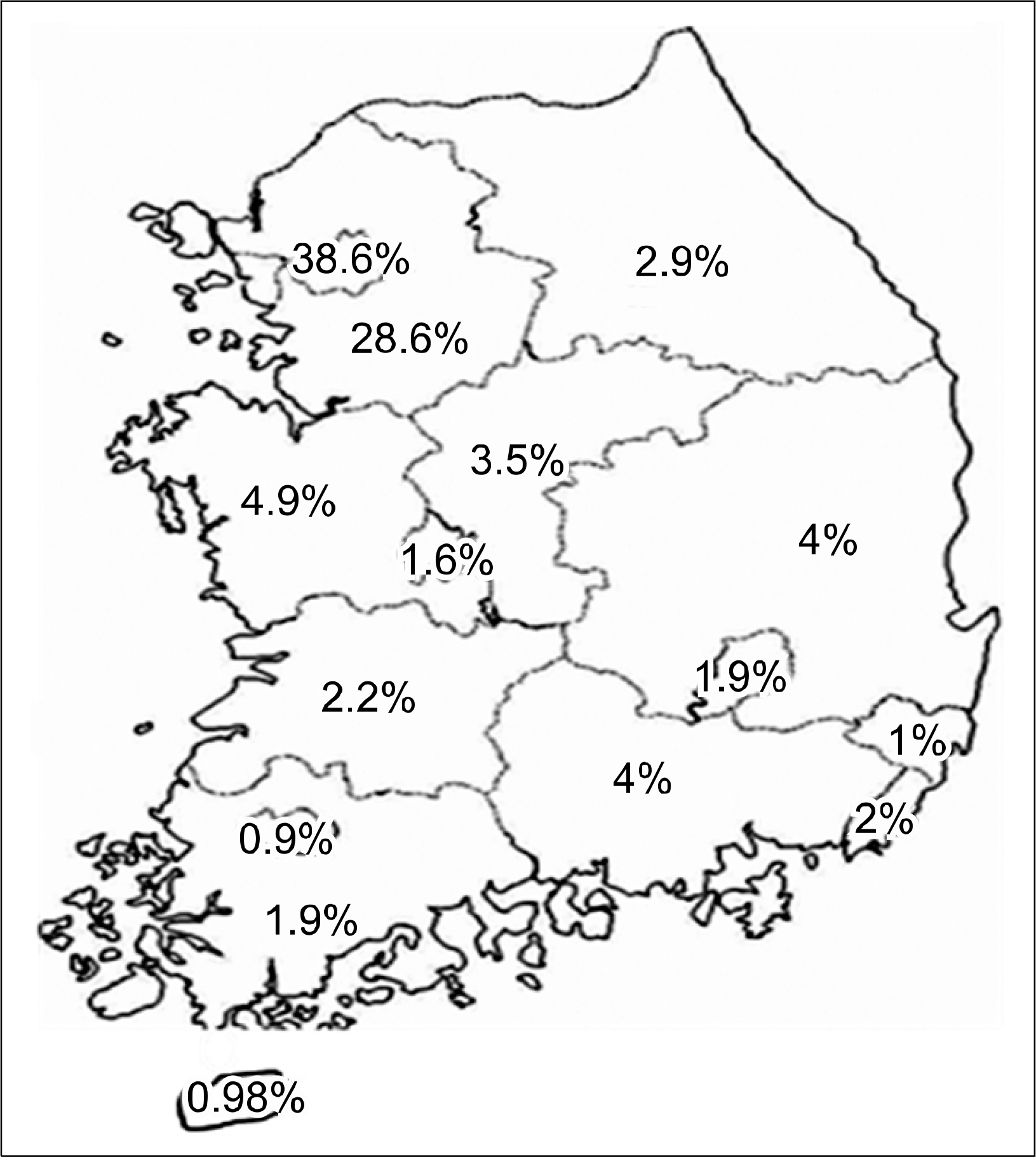1. Hur NW, Choi CB, Uhm WS, Bae SC. The Prevalence and Trend of Arthritis in Korea: Results from Korea National Health and Nutrition Examination Surveys. JKRA. 2008; 15:11–26.

2. Abdel-Nasser AM, Rasker JJ, Valkenburg HA. Epidemiological and clinical aspects relating to the variability of rheumatoid arthritis. Semin Arthritis Rheum. 1997; 27:123–40.

3. Lee HS, Korman BD, Le JM, Kastner DL, Remmers EF, Gregersen PK, et al. Genetic risk factors for rheumatoid arthritis differ in Caucasian and Korean populations. Arthritis Rheum. 2009; 60:364–71.

4. Ravindran V, Seah MA, Elias DA, Choy EH, Scott DL, Gordon PA. Clinical and radiological features of rheumatoid arthritis in British black Africans. Clin Rheumatol. 2008; 27:97–100.

5. Arnett FC, Edworthy SM, Bloch DA, McShane DJ, Fries JF, Cooper NS, et al. The American Rheumatism Association 1987 revised criteria for the classification of rheumatoid arthritis. Arthritis Rheum. 1988; 31:315–24.

6. Bae SC, Cook EF, Kim SY. Psychometric evaluation of a Korean Health Assessment Questionnaire for clinical research. J Rheumatol. 1998; 25:1975–9.
7. Steinbrocker O, Traeger CH, Batterman RC. Therapeutic criteria in rheumatoid arthritis. JAMA. 1949; 140:659–62.

8. Lee HS, Lee KW, Song GG, Kim HA, Kim SY, Bae SC. Increased susceptibility to rheumatoid arthritis in Koreans heterozygous for HLA-DRB1∗0405 and ∗0901. Arthritis Rheum. 2004; 50:3468–75.

9. Kang CP, Lee HS, Ju H, Cho H, Kang C, Bae SC. A functional haplotype of the PADI4 gene associated with increased rheumatoid arthritis susceptibility in Koreans. Arthritis Rheum. 2006; 54:90–6.
10. Lee HS, Remmers EF, Le JM, Kastner DL, Bae SC, Gregersen PK. Association of STAT4 with rheumatoid arthritis in the Korean population. Mol Med. 2007; 13:455–60.

11. Han TU, Bang SY, Kang CW, Bae SC. TRAF1 polymorphisms associated with rheumatoid arthritis susceptibility in Asians and Caucasians. Arthritis Rheum. In press. 2009.
12. Young A. What have we learnt from early rheumatoid arthritis cohorts? Best Pract Res Clin Rheumatol. 2009; 23:3–12.

13. Singh G. Arthritis, rheumatism and aging medical information system postmarketing surveillance program. J Rheumatol. 2001; 28:1174–9.
14. Yamanaka H, Tohma S. Potential impact of observational cohort studies in Japan on rheumatoid arthritis research and practice. Mod Rheumatol. 2006; 16:75–6.

15. Bengtsson C, Nordmark B, Klareskog L, Lundberg I, Alfredsson L. Socioeconomic status and the risk of developing rheumatoid arthritis: results from the Swedish EIRA study. Ann Rheum Dis. 2005; 64:1588–94.
16. Dadoniene J, Uhlig T, Stropuviene S, Venalis A, Boonen A, Kvien TK. Disease activity and health status in rheumatoid arthritis: a case-control comparison between Norway and Lithuania. Ann Rheum Dis. 2003; 62:231–5.

17. Albers JM, Paimela L, Kurki P, Eberhardt KB, Emery P, van't Hof MA, et al. Treatment strategy, disease activity, and outcome in four cohorts of patients with early rheumatoid arthritis. Ann Rheum Dis. 2001; 60:453–8.

18. Park NG, Kim WK, Shin DH, Choi YM, Lee YJ, Song YW, et al. Prevalence of Osteoarthritis and Rheumatoid Arthritis in Two Communities in Korea. JKRA. 2003; 10:151–7.
19. Korea Center for DiseaseControl and Prevention, Korea Institute for Health and Social Affairs. Smoking. In-depth Analyses of the Third National Health and Nutrition Examination Survey: The Health Interview and Health Behavior Survey Part. 2007.
20. Costenbader KH, Chang SC, De Vivo I, Plenge R, Karlson EW. Genetic polymorphisms in PTPN22, PADI-4, and CTLA-4 and risk for rheumatoid arthritis in two longitudinal cohort studies: evidence of gene-environment interactions with heavy cigarette smoking. Arthritis Res Ther. 2008; 10:52R.

21. Rupp I, Boshuizen HC, Roorda LD, Dinant HJ, Jacobi CE, van den Bos G. Poor and good health outcomes in rheumatoid arthritis: the role of comorbidity. J Rheumatol. 2006; 33:1488–95.




 PDF
PDF ePub
ePub Citation
Citation Print
Print



 XML Download
XML Download